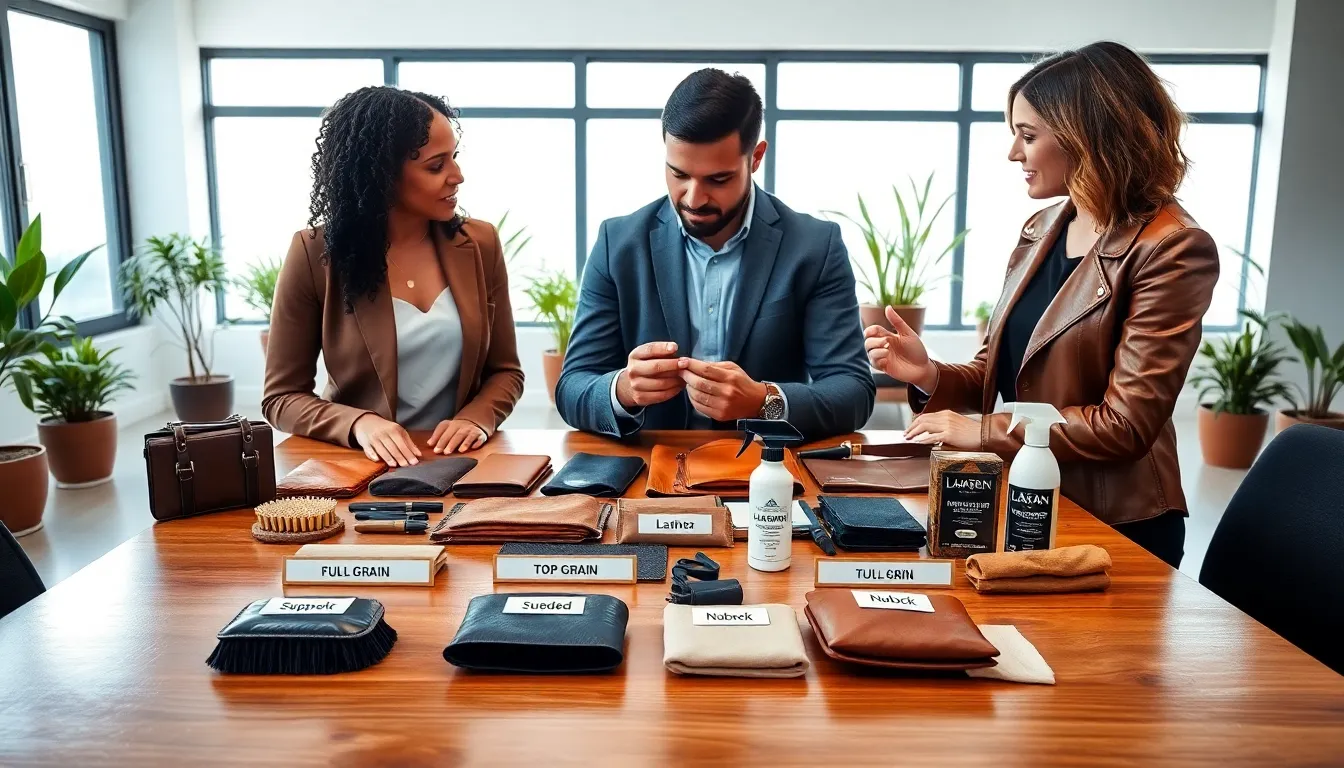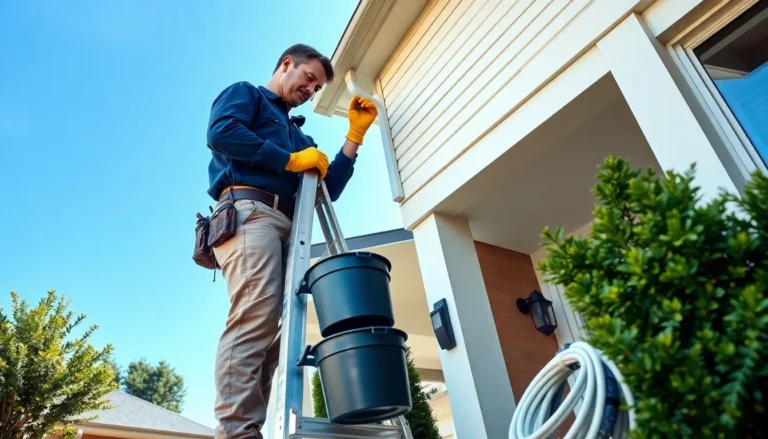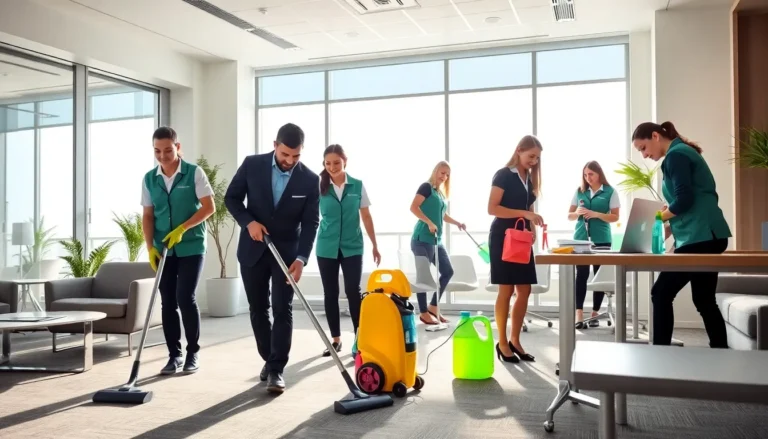Leather goods are a timeless investment, but they can easily lose their charm if neglected. Enter the leather cleaning kit, your essential toolkit for keeping items looking pristine. Ever wondered if there’s a magical potion that brings back that shiny allure without the need for power tools? Spoiler alert: there’s not. But with the right kit and some elbow grease, your leather can look as good as new. Let’s jump into the world of leather care, where dirt and scuffs don’t stand a chance.
Table of Contents
ToggleUnderstanding Leather Types

Leather comes in various types, each with its unique properties, strengths, and cleaning requirements. Understanding your leather type is crucial for proper care. Here’s a quick breakdown:
Full Grain Leather
This is the highest quality leather, made from the top layer of the hide. It features natural imperfections, which give it character. Cleaning full-grain leather takes a gentle touch and specific products to maintain its luster.
Top Grain Leather
Similar to full grain but sanded to remove imperfections, top grain leather is more stain-resistant but less robust than full grain. It requires slightly different cleaning methods, often less intensive than those for full grain.
Suede
This type has a soft, textured finish, but it’s also very sensitive to water and stains. Specialized cleaners are essential for maintaining suede’s unique look without ruining it.
Nubuck
Nubuck is often confused with suede: but, it’s made from the outer side of the hide, making it stronger. Like suede, it needs careful cleaning to avoid water damage.
Identifying your leather type helps you select the right cleaning methods and products. Because one size does not fit all in leather care.
Choosing the Right Cleaning Kit
Finding the perfect leather cleaning kit can feel overwhelming given the options available. Here are key considerations for selecting a kit that meets your needs:
- Type of Leather: Ensure the kit is suitable for your leather type. Some products are all-purpose, while others are specifically for suede or nubuck.
- Included Items: Look for a kit that has all essential components such as cleaner, conditioner, and protector. A well-rounded kit saves time and effort in sourcing individual products.
- Brand Reputation: Established brands often provide better quality products. Research reviews to understand how effective a kit is.
- Ease of Use: Choose a kit that includes clear instructions, especially for those new to leather care. If the steps sound like rocket science, it might be best to skip that kit.
When selecting, prioritize your leather goods’ specific needs. A well-chosen kit can make all the difference and provide lasting care.
Essential Components of a Leather Cleaning Kit
A complete leather cleaning kit should typically include the following components to ensure effective care:
Cleaner
This is the core of your kit. A gentle, pH-balanced cleaner removes dirt and grime without damaging the leather. Avoid harsh chemicals that can strip natural oils or discolor the material.
Conditioner
Conditioning is key to maintaining leather’s suppleness. This product replenishes oils that can evaporate over time, preventing cracking and drying.
Protector Spray
A defender against stains and spills, protector sprays create a barrier on the leather’s surface. It’s essential for preserving the beauty of your items and extending their longevity.
Soft Cloths or Brushes
Microfiber cloths are ideal for wiping away dust and applying products. Brushes are crucial for cleaning textured surfaces like suede or nubuck without damaging them.
Stain Remover
Depending on your kit, a specific stain remover can be included. This is valuable for tackling tougher stains without compromising the leather.
Having these components ensures a well-rounded approach to leather care, making cleaning and maintenance much simpler.
Step-by-Step Guide to Cleaning Leather
Cleaning leather doesn’t have to feel like an Olympic sport. Here’s a straightforward guide to tackle the job:
Step 1: Gather Your Supplies
Collect your leather cleaning kit, a soft cloth, and any additional materials you’ll need. Make sure you’re in a well-ventilated area to help avoid strong chemical odors.
Step 2: Dust Off
Start by gently wiping the leather with a dry microfiber cloth. This removes surface dust and prepares it for deep cleaning.
Step 3: Apply Cleaner
Dampen a cloth with your cleaner, apply it lightly to the leather, and rub gently in circular motions. Avoid soaking the leather: less is more here.
Step 4: Rinse the Cloth
Take a clean, damp cloth to wipe away any soap residue. It helps ensure no cleaner remains to dull the leather’s finish.
Step 5: Condition
Once the leather is dry, apply conditioner using another clean cloth. Work it in gently to nourish the leather and restore its natural oils.
Step 6: Protect
Finish with a protective spray, especially if the item is frequently exposed to the elements. Allow it to dry completely before use.
This step-by-step process guarantees a comprehensive clean, leaving leather goods as good as new.
Tips for Maintaining Leather After Cleaning
Preventing future wear and tear is crucial in leather maintenance. Here are some tips to extend the life of your goods:
- Regular Dusting: Make it a habit to dust off leather items weekly. A soft cloth can work wonders in keeping dirt at bay.
- Avoid Direct Sunlight: Leather dislikes excess heat. Store items out of direct sunlight to avoid fading and cracking.
- Limit Water Exposure: If possible, keep leather away from water. If wet, dry it slowly at room temperature, away from heat sources.
- Use Quality Storage: Keep leather items in breathable bags rather than plastic. This helps them maintain their shape and texture.
- Routine Conditioning: Conditioning every few months will help keep your leather looking fresh and supple. Regular care minimizes deeper cleaning sessions down the road.
Caring for leather is not a one-and-done deal: it’s an ongoing relationship that pays off in the long run.
Common Leather Cleaning Mistakes to Avoid
Even seasoned leather enthusiasts can make mistakes. Here are some pitfalls to avoid:
- Using Harsh Chemicals: It might be tempting to use household cleaners, but these can severely damage leather. Stick to products designed specifically for leather care.
- Over-Wetting: Avoid soaking leather items, too much moisture can cause warping and stains. Always dampen cloths, never saturate.
- Ignoring Stains Promptly: Waiting too long to deal with stains can lead to permanent damage. The quicker you act, the better your chances.
- Skipping Conditioning: Neglecting to condition leather can lead to cracking. Remember, dry leather is unhappy leather.
- DIY Remedies: Some DIY solutions can help but could also backfire. Always research before applying any home concoctions.
By staying mindful of these common mistakes, keeping leather goods in tip-top shape becomes much easier.






